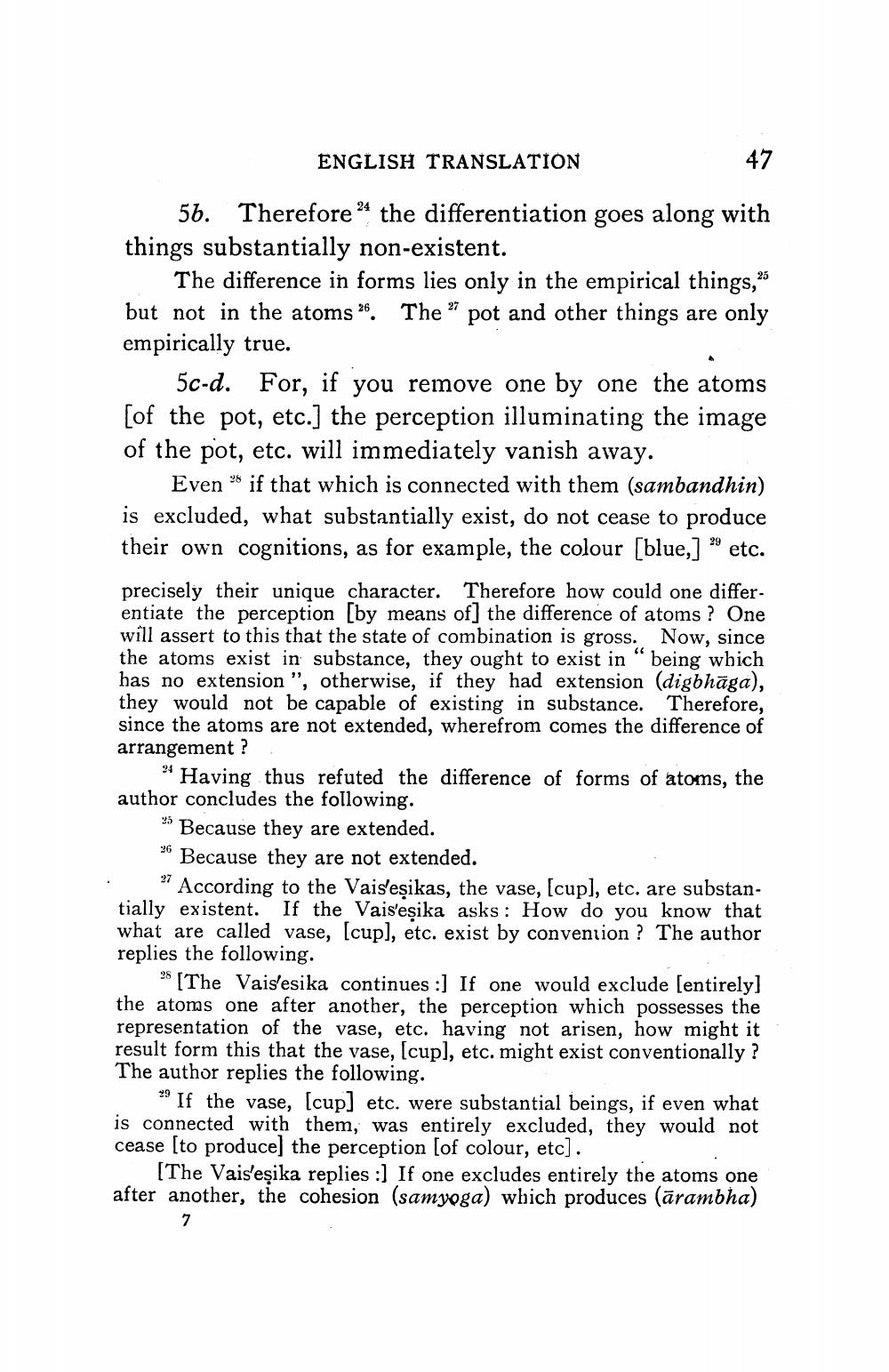________________
47
ENGLISH TRANSLATION 56. Therefore the differentiation goes along with things substantially non-existent.
The difference in forms lies only in the empirical things,95 but not in the atoms 26. The” pot and other things are only empirically true.
5c-d. For, if you remove one by one the atoms [of the pot, etc.] the perception illuminating the image of the pot, etc. will immediately vanish away.
Even " if that which is connected with them (sambandhin) is excluded, what substantially exist, do not cease to produce their own cognitions, as for example, the colour [blue,] ” etc.
precisely their unique character. Therefore how could one differentiate the perception [by means of] the difference of atoms? One will assert to this that the state of combination is gross. Now, since the atoms exist in substance, they ought to exist in “ being which has no extension ", otherwise, if they had extension (digbhāga), they would not be capable of existing in substance. Therefore, since the atoms are not extended, wherefrom comes the difference of arrangement ?
24 Having thus refuted the difference of forms of atoms, the author concludes the following.
** Because they are extended.
** Because they are not extended. . ? According to the Vaislesikas, the vase, (cup), etc. are substantially existent. If the Vais'esika asks: How do you know that what are called vase, (cup), etc. exist by convention? The author replies the following.
? [The Vaislesika continues :) If one would exclude [entirely] the atoms one after another, the perception which possesses the representation of the vase, etc. having not arisen, how might it result form this that the vase, (cup), etc. might exist conventionally? The author replies the following.
29 If the vase, (cup) etc. were substantial beings, if even what is connected with them, was entirely excluded, they would not cease (to produced the perception (of colour, etc).
[The Vaislesika replies :) If one excludes entirely the atoms one after another, the cohesion (samyoga) which produces (ārambha)




